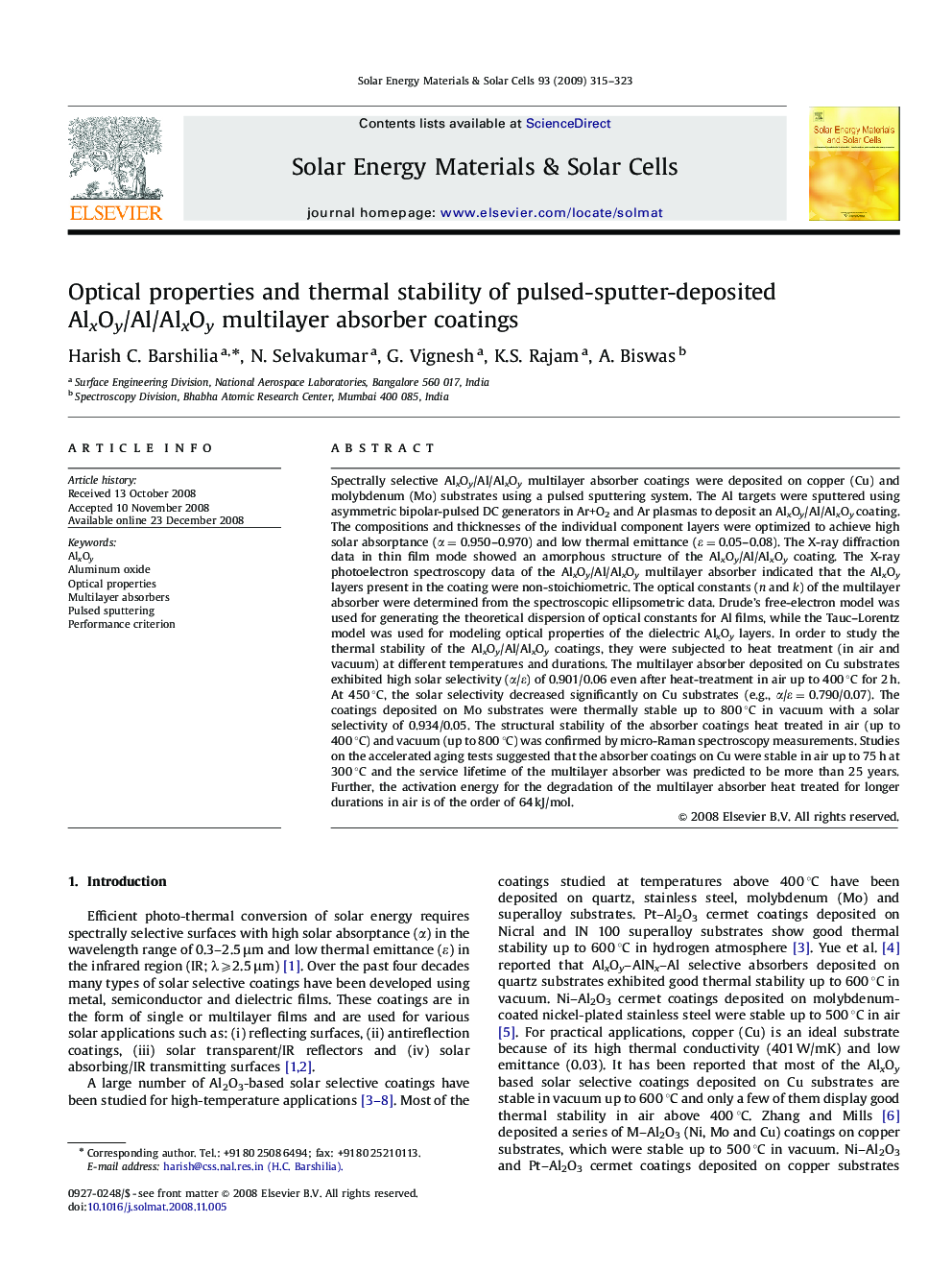| Article ID | Journal | Published Year | Pages | File Type |
|---|---|---|---|---|
| 80497 | Solar Energy Materials and Solar Cells | 2009 | 9 Pages |
Spectrally selective AlxOy/Al/AlxOy multilayer absorber coatings were deposited on copper (Cu) and molybdenum (Mo) substrates using a pulsed sputtering system. The Al targets were sputtered using asymmetric bipolar-pulsed DC generators in Ar+O2 and Ar plasmas to deposit an AlxOy/Al/AlxOy coating. The compositions and thicknesses of the individual component layers were optimized to achieve high solar absorptance (α=0.950–0.970) and low thermal emittance (ε=0.05–0.08). The X-ray diffraction data in thin film mode showed an amorphous structure of the AlxOy/Al/AlxOy coating. The X-ray photoelectron spectroscopy data of the AlxOy/Al/AlxOy multilayer absorber indicated that the AlxOy layers present in the coating were non-stoichiometric. The optical constants (n and k) of the multilayer absorber were determined from the spectroscopic ellipsometric data. Drude's free-electron model was used for generating the theoretical dispersion of optical constants for Al films, while the Tauc–Lorentz model was used for modeling optical properties of the dielectric AlxOy layers. In order to study the thermal stability of the AlxOy/Al/AlxOy coatings, they were subjected to heat treatment (in air and vacuum) at different temperatures and durations. The multilayer absorber deposited on Cu substrates exhibited high solar selectivity (α/ε) of 0.901/0.06 even after heat-treatment in air up to 400 °C for 2 h. At 450 °C, the solar selectivity decreased significantly on Cu substrates (e.g., α/ε=0.790/0.07). The coatings deposited on Mo substrates were thermally stable up to 800 °C in vacuum with a solar selectivity of 0.934/0.05. The structural stability of the absorber coatings heat treated in air (up to 400 °C) and vacuum (up to 800 °C) was confirmed by micro-Raman spectroscopy measurements. Studies on the accelerated aging tests suggested that the absorber coatings on Cu were stable in air up to 75 h at 300 °C and the service lifetime of the multilayer absorber was predicted to be more than 25 years. Further, the activation energy for the degradation of the multilayer absorber heat treated for longer durations in air is of the order of 64 kJ/mol.
